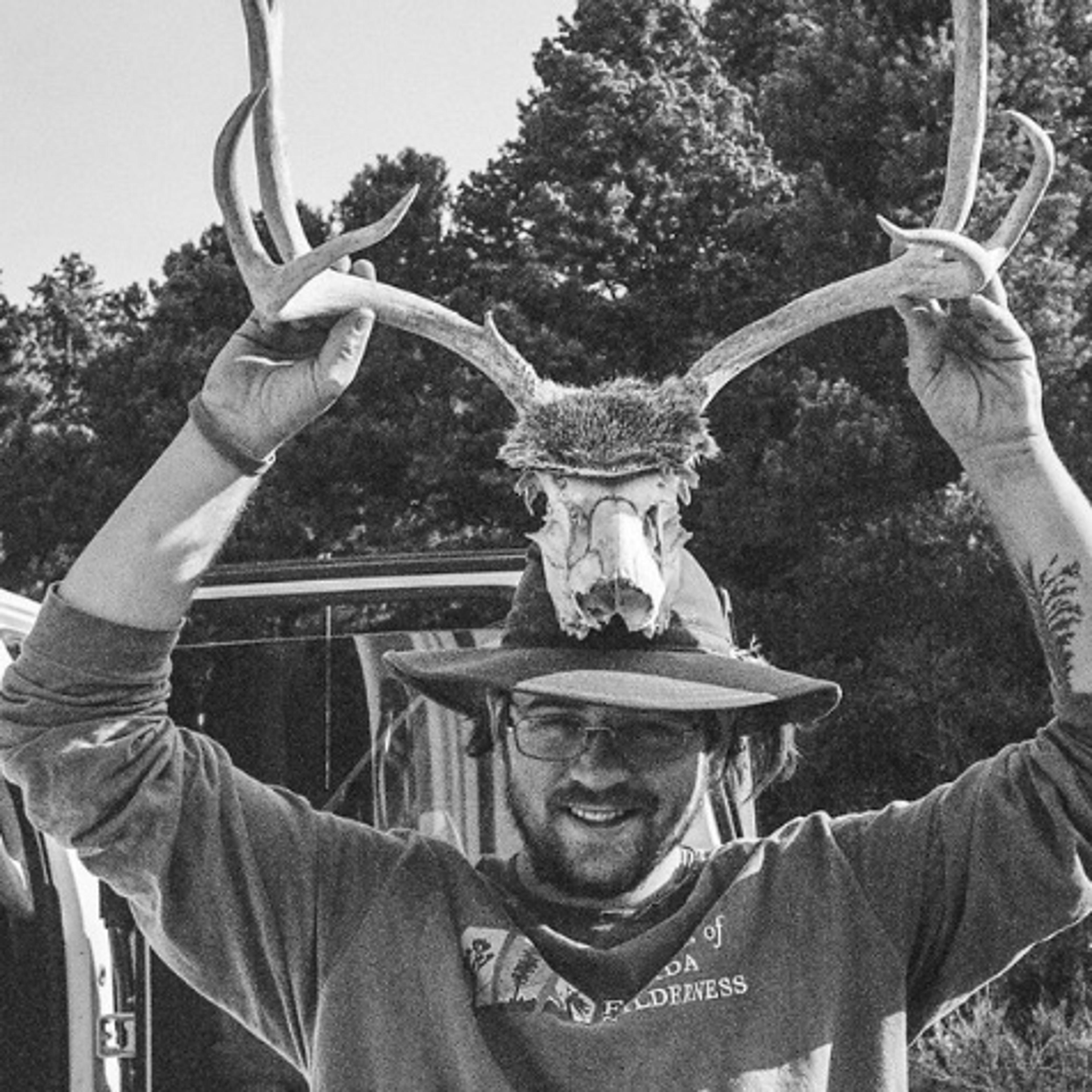The Ethiopian fine grain is succeeding in Nevada’s high desert.
East of the Sierra-Nevada mountain range and sandwiched between two marshes lies Fallon, a small community which brands itself the “Oasis of Nevada.” Despite the dry alkali soil, this small community bustles with growing activity in the spring, summer, and fall.
The Derby Dam diverts water from the Truckee River, making the dusty region a hub for alfalfa, corn, wheat, melons, and more. But Fallon is also the home to an experiment—over a decade ago, an alfalfa farmer planted a little known grain in lieu of wheat. Eragrostis tef, commonly known as teff, is a species of grass native to Ethiopia that has become increasingly popular as an alternative grain in the United States.
“It is a very, very fine textured grass with very small seeds,” said Jay Davidson, the crop specialist at Desert Oasis Farms. A pound of teff contains about 1.3 million seeds. Davidson, previously an Alternative Crop and Forage Specialist for the University of Nevada, is largely responsible for bringing teff from Ethiopia into the high desert of Nevada. Historically in the United States, this annual grass was grown as a nutrient-rich forage. “It’s a very high quality hay, primarily for horses,” says Davidson.
At Desert Oasis Teff & Grain, however, teff is grown for human consumption. The grain is gluten-free and packs a nutritional punch. High in iron, teff also contains substantial resistant starch, which feeds beneficial bacteria in our digestive system. It also has a low glycemic index, making it popular for diabetics.
“As a grain crop it competes well or exceeds the value of other commonly grown grains at a lower production cost,” said Davidson. He believes the higher sticker price, coupled with the nutritional aspect of the grain, led to the breakthrough in the American market. In addition, a farmer can sell both the forage and grain, boosting financial yields.
John Getto owns Desert Oasis & Teff and has been successfully growing the grain for almost 15 years. His son, Myles Getto, works alongside him, often planting the season’s crop on their 800 acres. He will become the fourth generation Getto to operate the family farm. The Gettos began growing teff in 2009 after being approached by Davidson, who had developed a variety of teff that thrives in the high desert.
“We grow ours almost exclusively for grain,” said Davidson, noting the market demand for gluten-free grains has skyrocketed in the past several years.
“[In Ethiopia], we ate teff morning, noon and night. It’s an absolutely incredible grain to them.”
Initially, their customer base was Ethiopians living in the United States. Teff is a major aspect of many east African diets, and Davidson traveled to Ethiopia to study growing practices. “It was interesting, I knew it was important to them, but when I was over there, we ate teff morning, noon and night. It’s an absolutely incredible grain to them,” said Davidson.
The plant itself is a tall lanky annual grass that grows quickly, from seeding to silo in about 100 days. Under the right conditions, teff can grow up to ten feet. Getto uses an air broadcast seeder to lay down the seed around the middle of May, then flood-irrigates the fields through the middle of August.
“It uses a lot less water, maybe two-thirds to half of what alfalfa does,” said Davidson. Fallon receives about five inches of rain a year, making water-smart crops the best choice for farmers. “Most of the lovegrasses have a very interesting adaptation, in that if for some reason you don’t get water on it after it’s up and growing, it will look like it’s dead, it will go brown,” elaborated Davidson. This adaptation helps the plant survive periods of drought. “As soon as we put water back on it, within literally an hour or two, you’ll start to see it green up and start growing again.” But this adaptation is not without risk; as the grain goes dormant, it lengthens the growing season.
“If you didn’t get water on it for three weeks, there is virtually no growth for three weeks,” said Davidson. This puts the growing season that much further behind. In northern Nevada and many parts of the high desert, freezes can arrive as early as September. Teff is very susceptible to cold weather, making Davidson’s irrigation management critical.
They seed about two pounds to the acre and focus on sound management of weeds and irrigation throughout the growing season. “Under good conditions and proper management, we’ll harvest 2,000 pounds a hundred days later,” explained Davidson.
“Under good conditions and proper management, we’ll harvest 2,000 pounds a hundred days later.”
With these yields and prices fluctuating around $0.50 per pound, income from the grain alone could be around $1,000 per acre. Davidson explained teff has become an important crop in their rotation. He said the margins often surpass what they have seen with alfalfa. He said there are not many crops that produce these kinds of yields, making the economics of teff a strong bet. He estimates the region produces about 1,600 to 1,800 pounds per acre.
“We like to be up around a million or two million pounds each year,” said Getto. Teff costs about $142 per acre to grow in Nevada, placing margins anywhere between $600 and $800 per acre. When you include the fodder sales and reduced water needs, the economics favor growing teff over almost any other crop in the high desert.
The most expensive input for Getto is water. Unlike teff farmers in the Midwest, all of their fields are irrigated. The cost of water adds up and will most likely increase in the future. While these margins seem alluring, climate change could throw a wrench into the plan.
Climate Challenges
“This area where we grow has undoubtedly warmed over the last 15 years and we’re having problems with army worms,” said Davidson. Insects were never a challenge for Getto and Davidson in the past but with warmer temperatures, they are now relying on more insecticides than before. Nevada is also one of the fastest warming states in the country, and northern Nevada, where Getto is growing teff and alfalfa, is a particularly effected area.
In the past few years, a new challenge has presented itself: wildfires. As fire season across the intermountain west continues to lengthen and worse, the smoke has begun to settle into the valley for weeks, if not months at a time.
“We’ve seen a reduction of solar radiation here,” explained Davidson; that reduction has affected their yields and bottom line. As climate change has driven wildfires to greater intensity and size, the impact of smoke on agriculture has become more widespread. As smoke and drought have become 21st century challenges, Getto has turned towards trying new tactics.
Innovation pushing the limits of teff production
“It uses low amounts of fertilizer, usually 60 pounds per acre of nitrogen,” said Davidson. “Fertilizers are currently much higher priced than in the past.” The University of Nevada, Reno, which leads the study of teff in the region, estimates that the application of the herbicide 2-4-D costs about $12 per acre.
Davidson said the biggest limitation to the crop are grass weeds. Since they directly compete with teff and are genetically similar, there are few chemical options for treatment. “We did get a broadleaf herbicide labeled [for use] and that helped us dramatically,” he said. This usage reduces the number of seasons they can grow teff on a given plot due to accumulation in the soil so they use it sparingly. Another management strategy utilized is only growing teff two years in a row on a plot.
The University of Nevada, Reno has been studying teff for several years. Before Davidson retired, he was working on a study of over 350 varieties of the grain. “We were looking at trying to select plants that were two things: more drought resistant and had a stiffer stem,” he explained.
Because of teff’s height and weak stem, it tends to lodge when the seed matures — a condition where the plant falls horizontally to rest on the ground, sometimes making harvest difficult. The tests led to a dozen varieties they tested in the field to determine if traits favorable to stiffer stems and drought tolerance could be realized in practice.
“The big issue here for farmers is that they face an uncertain future in terms of water availability.”
“The big issue here for farmers is that they face an uncertain future in terms of water availability,” said Dr. John Cushman, a biochemist at the university. The west is experiencing a multi-year drought that has reduced snowpack. In conjunction with the high value grain and forage of teff, the grain’s drought tolerance is another driving factor of his research. He tested for chronic and acute drought stresses and was able to isolate a few drought tolerant varieties. “We are now doing more detailed field testing to show they are actually drought tolerant,” said Cushman. He suspects these varieties could be available to farmers within three to five years.
Cushman is also working on the lodging problem. When teff lodges, yields could be reduced by 40%. He is building upon the work of Norman Borlaug to target two genes that affect the grass’s stature. Borlaug and his team were able to find semi-dwarf varieties of wheat and rice through natural selection, a process that took years to realize. “We could do that with teff, but it would take a long time,” said Cushman. He is using CRISPR technology to find ways to reduce the stature of teff.
“If you reduce the stature, it increases the ratio of seed to overall biomass,” explained Cushman.
Getto and Davidson are hopeful for advances in the grain. If lodging can be reduced, their two step harvest process can be cut in half. “We could just go through and cut it one time…that would reduce costs for everybody,” said Davidson.
Getto and Davidson remain optimistic and hopeful that average temperatures stay steady, the impacts of smoke decline and the popularity of teff continues to grow. As John Getto’s son continues to learn the ins and outs of operating a modern teff farm, the future for a fourth generation family farm in Fallon, Nevada is becoming a reality.







